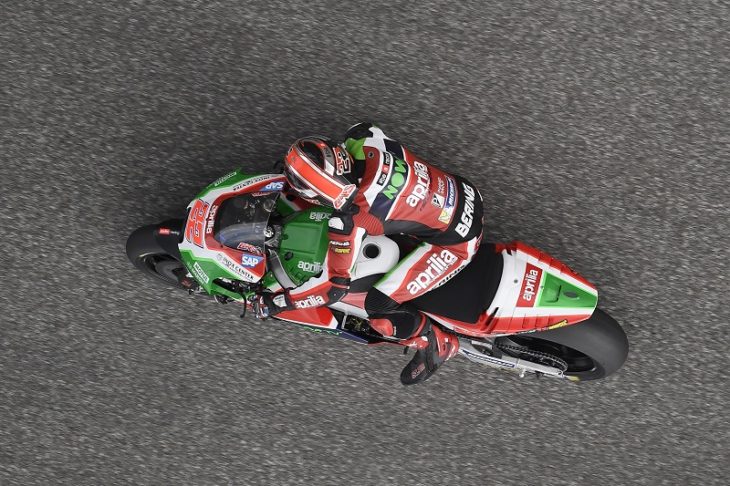FIRST DAY OF PRACTICE IN TEXAS
ESPARGARÓ HARD AT WORK ON HIS RS-GP, GRIP AND FRONT SETTINGS ARE THE ISSUES TO RESOLVE
LOWES IMPROVES FROM ONE FRIDAY SESSION TO THE NEXT
Partly due to the Texan track, which proved to be in less than stellar conditions, the first day of practice for the Aprilia Racing Team Gresini was spent looking for the best setup on the RS-GP machines ridden by Espargaró and Lowes. The Circuit of the Americas in Austin was found in much different conditions than in 2016, with a series of bumps and dips. The two free practice sessions were therefore dedicated to finding the right settings for the front end in order to handle this irregularity of the American track and to a series of comparative tests to choose the rear tyre.
Aleix Espargaró, fresh from two encouraging performances in the initial races of the season, finished FP1 in ninth place (time: 2’06.411) and FP2 in fourteenth with 2’05.468. The standings are very tight, with 11 riders “squeezed” into 2’05. An improvement of a few tenths could be decisive in the final free practice session tomorrow that will determine who goes through to Q2. Sam Lowes continues his bike and category apprenticeship. His 2’06.741 in FP2 demonstrates a clear improvement compared to his 2’08.292 in the morning.
ALEIX ESPARGARO’
“It was certainly not our best day of practice. I struggled, especially with front end stability. We also had some trouble with direction changes. The RS-GP is still not as agile as I would like it to be. Now the guys on the team will analyse the data. I think for tomorrow that we will work on the geometry and on weight distribution. Rear tyre choice, on the other hand, shouldn’t be a problem. I tried two options and both felt good, so we will focus on the feeling with the front end, which is our main problem for now.”
SAM LOWES
“The second session went rather well. I was able to improve both in terms of time and my feeling. As often happens, our pace is better than our flying lap. I must say that this is a demanding track with the MotoGP bike, but these are difficulties that help me to improve quickly, changing lines, riding style and my position in the saddle. The track has a lot of dips and our bike is usually stable, but here we will need to work on absorbing the bumps. I think it is a problem that a lot of the riders will have. We will try to solve it by both working on the setup and by trying to change a few trajectories.”






